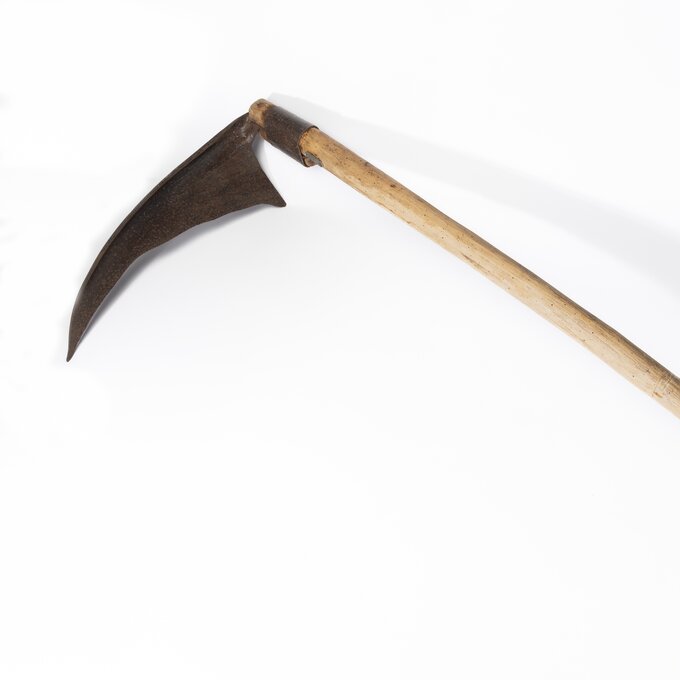Hof der dingen - Scythe

We cannot and must not overlook our proud farming tradition in this exhibition. For generations, the fields of West Flanders have been shaped by the tireless dedication of our farmers.
To say the road has not always been smooth, would be a euphemism. The First World War hit the Westhoek and its farms especially hard. In the districts of Diksmuide and Ypres, the entire agricultural area—some 68,000 hectares— was destroyed, and two cities and 68 villages had to be rebuilt from the ground up. The total cost of this immense undertaking was estimated at one billion Belgian francs.
Even after the Second World War, our farmers faced new hardships when the flax industry took a heavy hit. Many West Flemish farmers chose to move south to Wallonia – the French speaking part of our community. There, larger farms could be developed and unemployment in the agricultural sector was low.
Yet, through it all, West Flanders’ agriculture continued to flourish—thanks in no small part to the hard work that runs in our veins.
This scythe, once used to harvest grass and grain, comes from Kortemark and dates from the first half of the twentieth century. For Brecht Demasure – collections manager at Bulskampveld – it stands as a symbol of the back-breaking work our ancestors carried out in the fields. Therefore, it surely earned its place in this collection – a tribute to the diligent West Flemish people.